
During the week leading up to my Mom’s death, I did a lot of cooking with my niece and nephew. It was so nice to be with them every day for a chunk of time. And during hard times, eating nourishing food together is so important. I also felt like it was an homage to Mom, who put a lovingly prepared meal on the table every night. Remember that roast chicken from a few posts ago? After we made that we turned the carcass and some of the extra veggies into chicken soup, which we all ate for the rest of the week. When I returned to Portland, I kept making chicken broth. Now it seems to have become a habit. I just keep it in a huge jar in the fridge and pour it out bit by bit to eat up and drink plain with a bit of ginger and cinnamon (try it!) or add whatever veggies I have to make a simple soup.
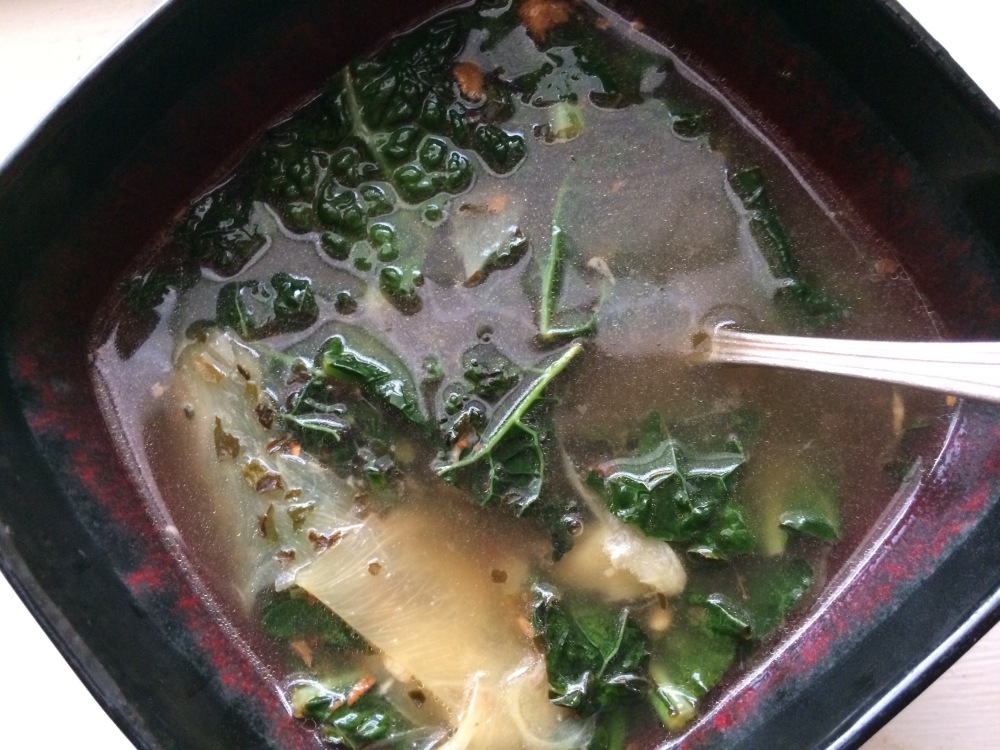
My mother never passed up a chance to make the most out of anything. Having grown up in the Depression, she would cut the toothpaste tube in half and scrape out what was left inside. We could all learn a thing or two from that kind of thinking in our disposable world today. Well … we do appear to be learning a bit — making bone broth, for example — the latest hipster health craze — is simply an ancient practice that all our grandparents did just because … well, that was what you did with bones! Made soup! Your grandma did too, right? I recall Mom and Grandma and my great aunts were always sucking on the bones of roast chicken and pulling the marrow out of roast beef bones. As a kid, I wasn’t a huge fan of meat to begin with, and the cracking and sucking of bones was just plain too much. Now, though, I know they were onto something.
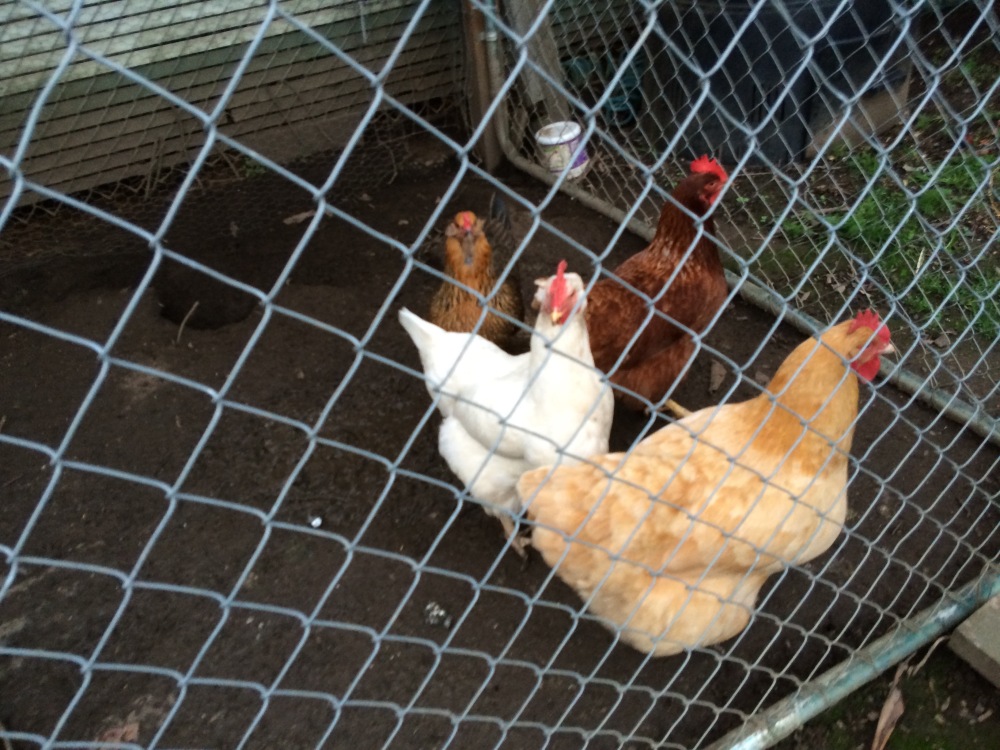
Bone broth of various types, often with added healing herbs, is frequently prescribed by Chinese physicians to nourish and support. And it’s old news at this point that old-fashioned chicken soup does, in fact, help address the unpleasant symptoms of upper respiratory infections. It’s interesting to me that so many different cuisines have a chicken broth recipe for colds. I was just talking to a good friend from medical school, who told me about Yakhni, the cold remedy she knew growing up in Pakistan — plain chicken broth with salt and pepper.
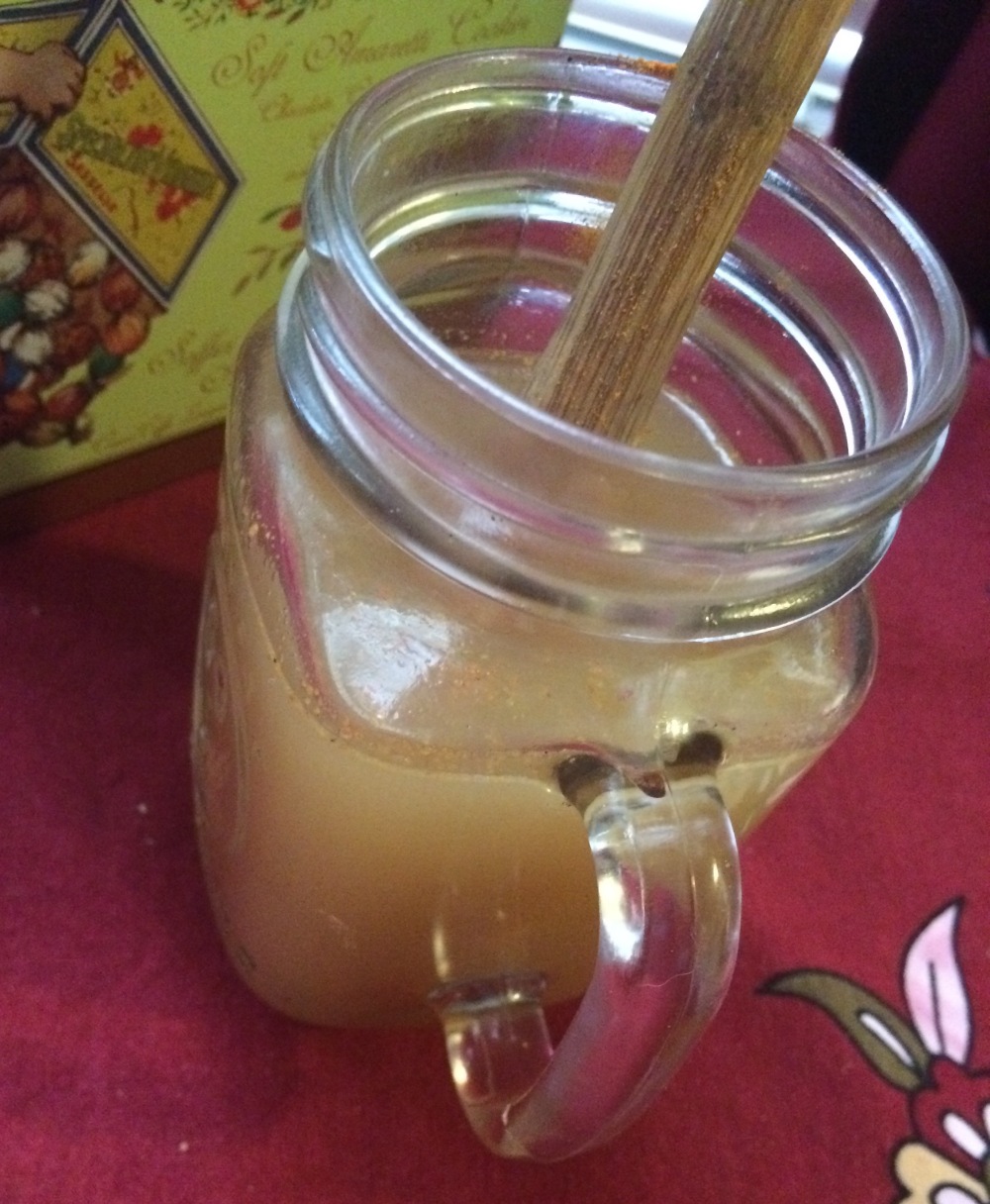
Last year, when I was home in Maine, I went to the local grocery to get pigs’ feet for soup. All the supermarkets there always used to have pigs’ feet. Not so long ago, when I was in medical school, we bought them to practice suturing on. Now, though, they were nowhere to be found. I finally found some at a local butcher, where people have always brought their farm animals to be slaughtered. I asked if anyone knew why they had disappeared from all the supermarkets. The manager told me that almost no one here wants them anymore so all the animal feet are now shipped to China … where, guess what … they make soup out of them!
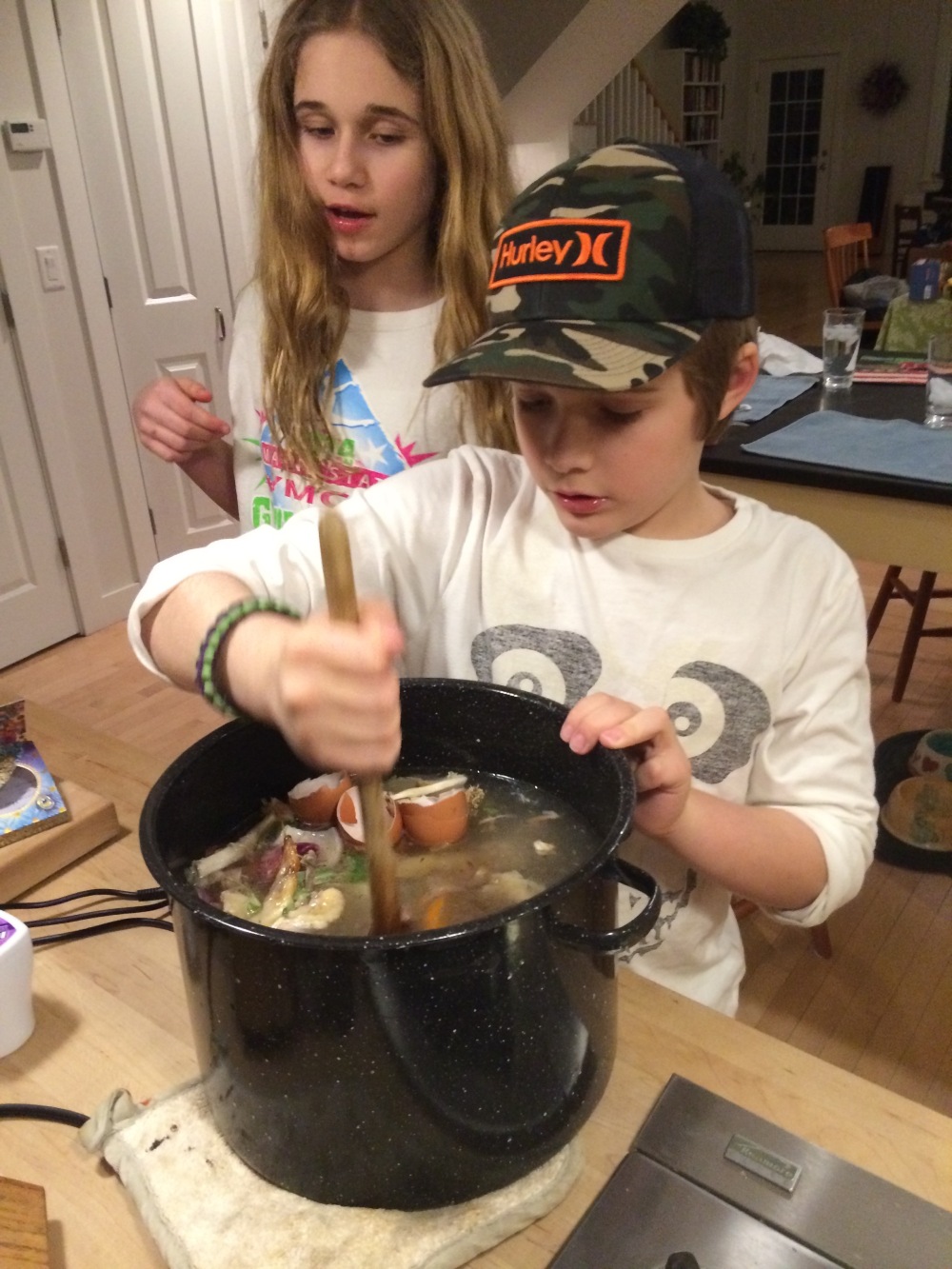
Okay, folks … we need our bones back. Bone broth supplies the building blocks of collagen, necessary for healthy skin and bones. I also always add vegetable scraps, which increases the content of trace minerals. Keep a plastic bag in the freezer, and instead of tossing vegetable scraps, throw them in the bag. Then you’ll always have the makings a nice, complex, flavorful broth on hand. There are lots of books and websites out there on making bone broth. Some are fairly complicated and obsessive. I lean toward simple and adaptable. Just put bones and vegetables in a pot. (Crockpot works great too!) One of my favorite new books is “Bone Deep Broth” by Taylor Chen & Lya Mojica. They got their start making broth for the patients of a local acupuncturist.
TO MAKE YOUR BROTH:
- A roast chicken carcass, picked clean of meat — keep the skin with the bones!
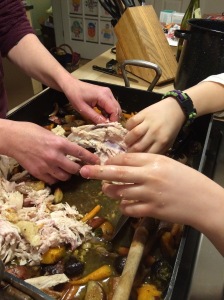
Stripping the chicken … a good job for kiddos! - Scraps of veggies of any sort — also, apple peels, lemon rinds, egg shells, potato peels (organic only) — the peels and shells have flavor and important minerals that will add depth and nutrients to your broth.
- Bay leaves, kombu (seaweed available in any health food store), rosemary, sage, fresh ginger root, garlic, star anise, cinnamon sticks … you name it — pick your herbs and spices!
- Apple cider vinegar (or any vinegar you have)
- 2-4 chicken feet (if you can find them — check out a local butcher)
Put everything in a large stock pot, add several tablespoons of vinegar, and cover with water. Bring just to a boil, and then turn down to the lowest heat that will keep a gentle simmer going. Simmer for as long as you have — about 4 hours minimum up to 8 if you’re just home and can keep the pot on the stove, checking every so often to see if it needs more water. When done, let it cool down a bit so you’re not straining burning hot liquid. I often turn the pot off just before bed and strain it when I wake up, directly into a commercial-size pickle jar I keep in the fridge. I put a fine mesh strainer in the jar, scoop out the biggest stuff from the stock pot and discard, then pour through the strainer right into the jar. In the photo below, Jed and I are using a colander lined with cheesecloth to strain the broth right into another soup pot to make soup. Figure out what works for you! Once you have your broth, you can make soup with it right away or store in the fridge or freezer. It’s so nice to have on hand — freeze some in ice cube trays so you can always pop a few cubes into soups and sauces — and you have it at the ready when someone gets sick.
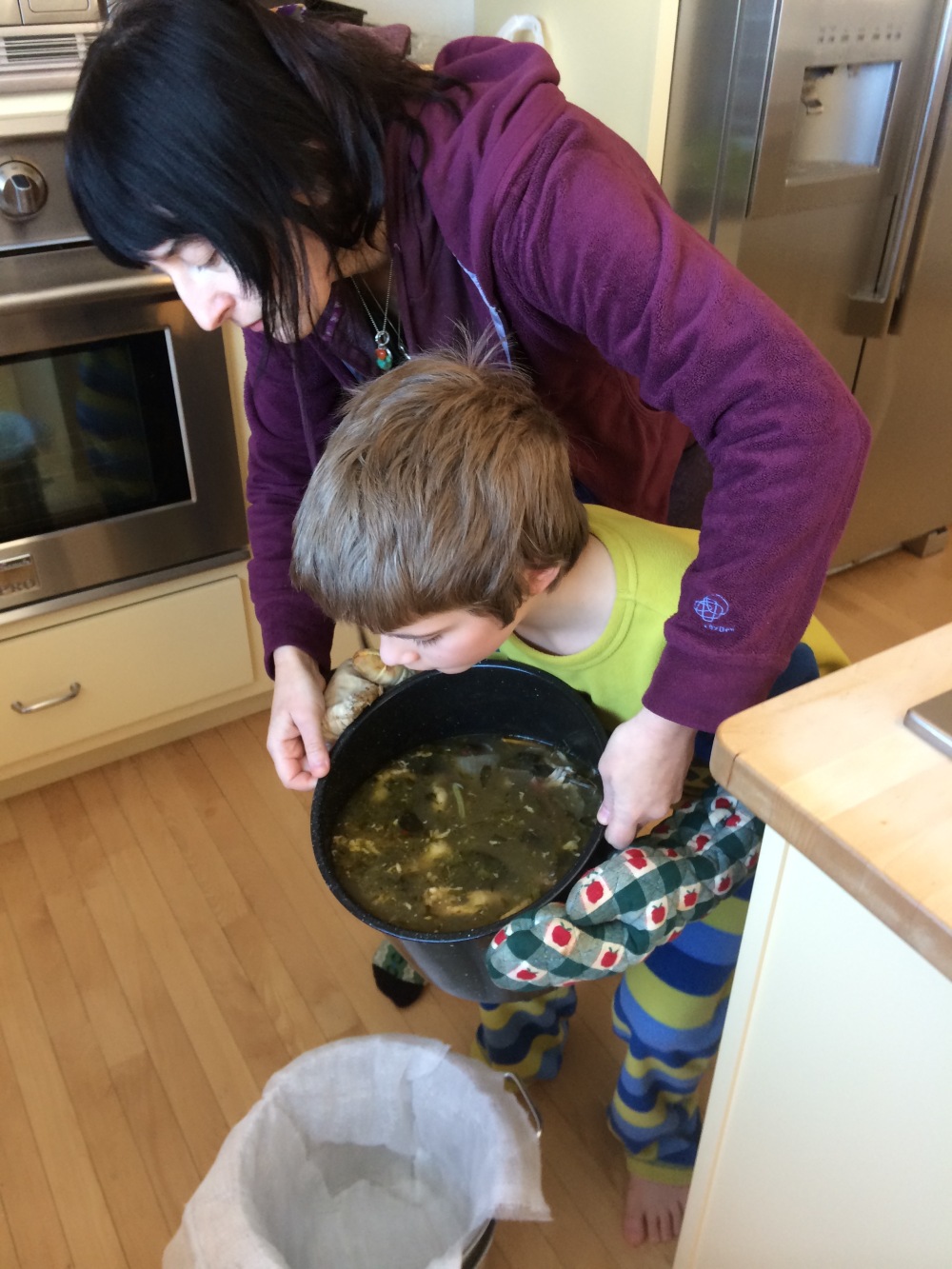
TO MAKE YOUR CHICKEN SOUP: Mom’s soup was really basic and simple. I’ve listed some things that I add based on the season or what I feel like or have in the fridge … you probably have ingredients you recall from chicken soup your own mom or grandma made … it’s interesting to ask the elders in your family about old recipes for things like this that you can revive and pass on to your kids.
- 1 onion
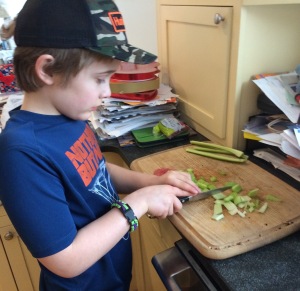
Practicing safe cutting skills… - 3 cloves garlic
- 2 ribs celery
- 2 carrots
- 1 bay leaf
- the meat scraps saved from the chicken
- 1 cup fresh parsley, diced
- 1 can kidney beans (or one cup dried beans, soaked overnight)
- 1/2-1 cup pearled barley
- Some of my Favorite Additions: 1 can diced tomatoes, several cups cubed butternut squash, rosemary (fresh or dried), sliced mushrooms, 1-2 inch chunk fresh ginger, grated (saute this with the onion at the beginning), fresh or frozen spinach/kale/swiss chard, roasted green chile, seaweed, chopped cilantro … if it’s a vegetable you like, throw it in!

Chop and saute the onion and garlic — and mushrooms if

you’re using. If you’re using dried beans, add them with the barley, add bay leaf and any other herbs you’re using. Pour in enough broth to fill your pot halfway, bring to a boil and then simmer on low heat until the beans are tender (time will vary depending on the kind you’re using. Just check every so often and make sure you have enough liquid in there. Once your beans are tender — barley will be soft and falling apart by now — add any other veggies you’re using, starting with the ones that take longest to cook such as carrots, and ending with greens like spinach and swiss chard that take only a minute or so and can just cook in the hot liquid with the heat turned off. You want to cook your veggies just until tender so they hold onto as many nutrients as possible. Add miso and any fermented foods after pot has been removed from heat so the beneficial bacteria aren’t killed. I like to add these ingredients to individual bowls just before serving. Store any leftovers in serving-size container in your freezer to grab for lunch.
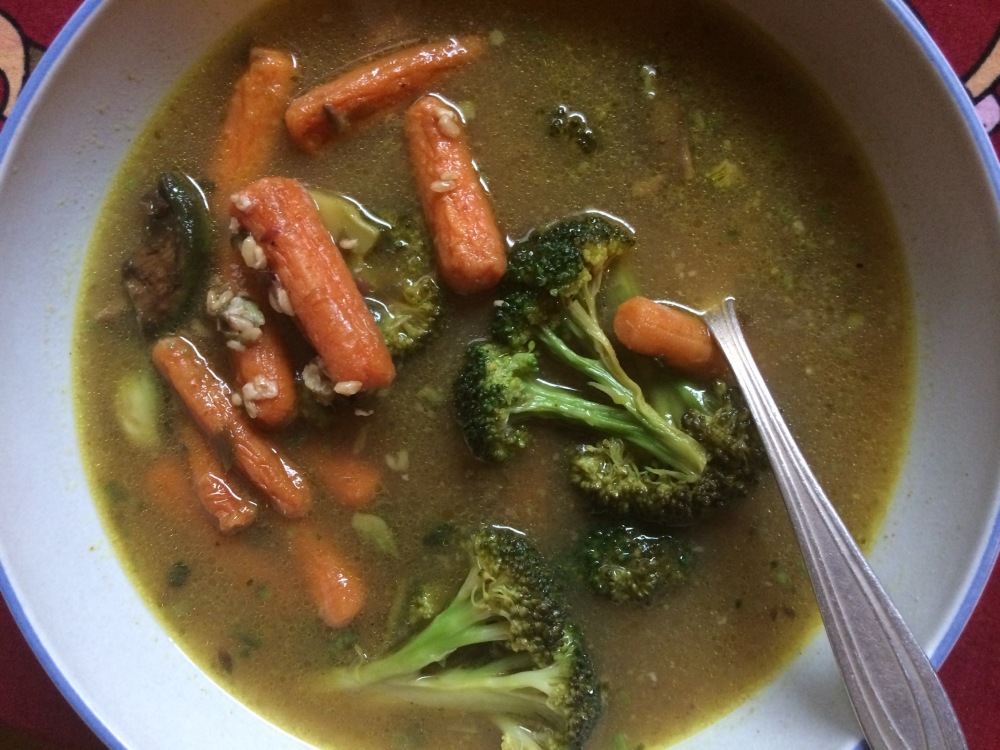
May your mother’s soul rest in eternaetetnal. Yeah, I just started to make bone broth (yakhni) and Lola love the bones, even myself I such on them before Lola. A few days ago I made pig feet Palao, OMG, it’s tastiest thing in the world, but a bit to greasy. The best way to make yakhni is to make it the day before then you let it cool and all the fat gets hard on top easy to scoop up the grease. Then you have a tasty broth that is light. Let me know in advance next time you come down, I need to make you the cow hoof Palao
LikeLike
Can’t wait, Hassina! I will be there sometime in the summer … xoxo
LikeLike